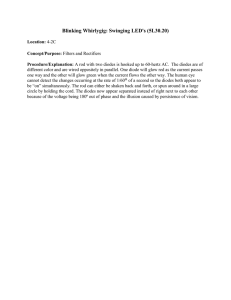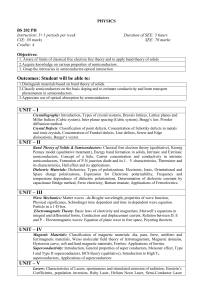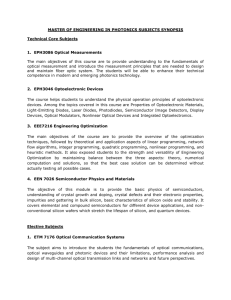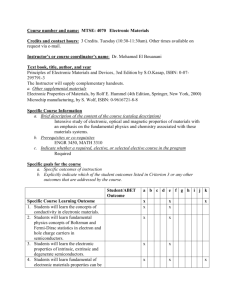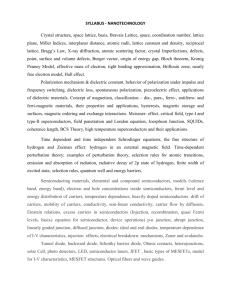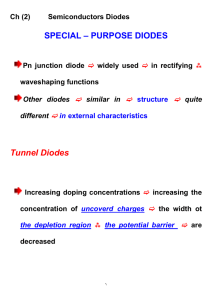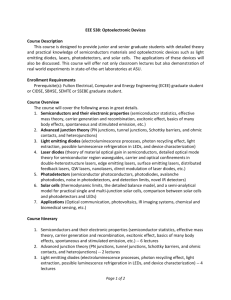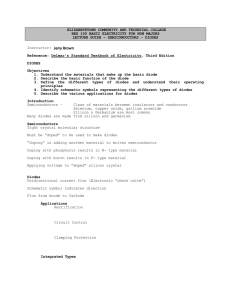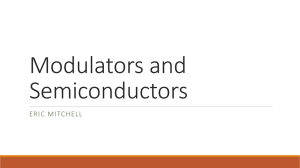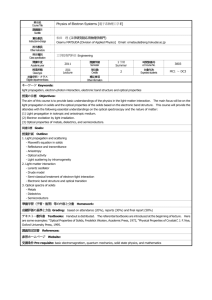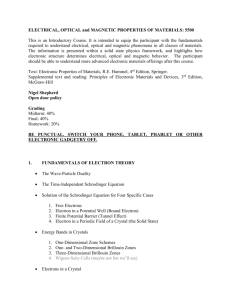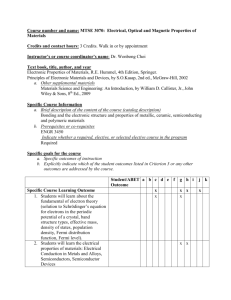MSE250 Nanoscale Materials Laboratory
advertisement
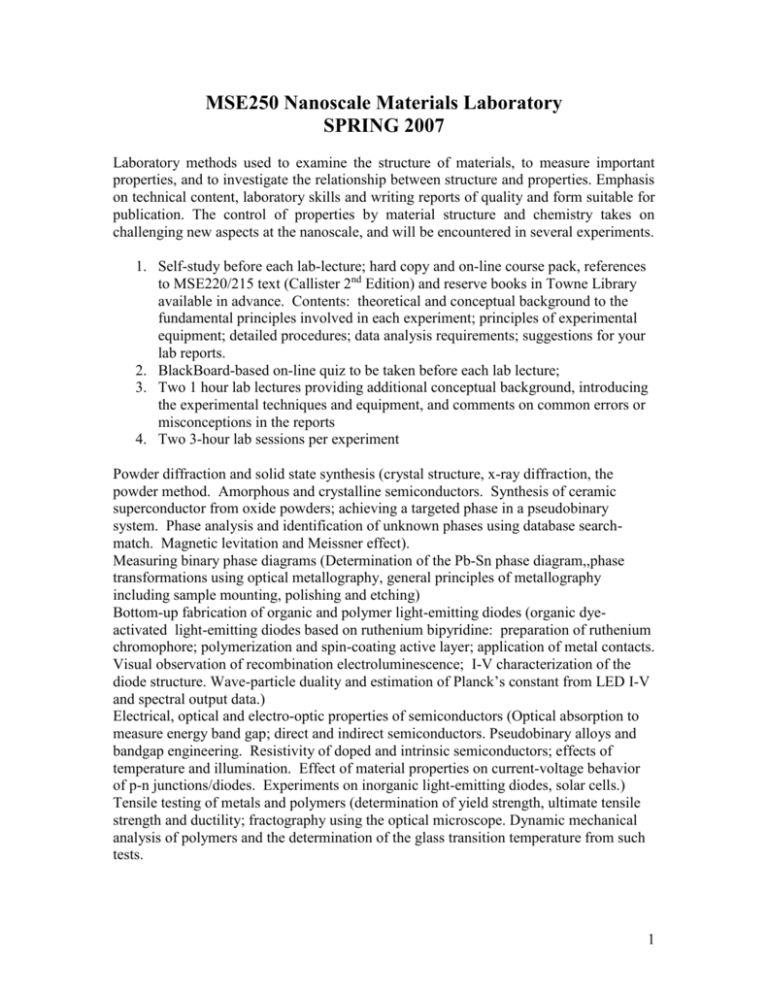
MSE250 Nanoscale Materials Laboratory SPRING 2007 Laboratory methods used to examine the structure of materials, to measure important properties, and to investigate the relationship between structure and properties. Emphasis on technical content, laboratory skills and writing reports of quality and form suitable for publication. The control of properties by material structure and chemistry takes on challenging new aspects at the nanoscale, and will be encountered in several experiments. 1. Self-study before each lab-lecture; hard copy and on-line course pack, references to MSE220/215 text (Callister 2nd Edition) and reserve books in Towne Library available in advance. Contents: theoretical and conceptual background to the fundamental principles involved in each experiment; principles of experimental equipment; detailed procedures; data analysis requirements; suggestions for your lab reports. 2. BlackBoard-based on-line quiz to be taken before each lab lecture; 3. Two 1 hour lab lectures providing additional conceptual background, introducing the experimental techniques and equipment, and comments on common errors or misconceptions in the reports 4. Two 3-hour lab sessions per experiment Powder diffraction and solid state synthesis (crystal structure, x-ray diffraction, the powder method. Amorphous and crystalline semiconductors. Synthesis of ceramic superconductor from oxide powders; achieving a targeted phase in a pseudobinary system. Phase analysis and identification of unknown phases using database searchmatch. Magnetic levitation and Meissner effect). Measuring binary phase diagrams (Determination of the Pb-Sn phase diagram,,phase transformations using optical metallography, general principles of metallography including sample mounting, polishing and etching) Bottom-up fabrication of organic and polymer light-emitting diodes (organic dyeactivated light-emitting diodes based on ruthenium bipyridine: preparation of ruthenium chromophore; polymerization and spin-coating active layer; application of metal contacts. Visual observation of recombination electroluminescence; I-V characterization of the diode structure. Wave-particle duality and estimation of Planck’s constant from LED I-V and spectral output data.) Electrical, optical and electro-optic properties of semiconductors (Optical absorption to measure energy band gap; direct and indirect semiconductors. Pseudobinary alloys and bandgap engineering. Resistivity of doped and intrinsic semiconductors; effects of temperature and illumination. Effect of material properties on current-voltage behavior of p-n junctions/diodes. Experiments on inorganic light-emitting diodes, solar cells.) Tensile testing of metals and polymers (determination of yield strength, ultimate tensile strength and ductility; fractography using the optical microscope. Dynamic mechanical analysis of polymers and the determination of the glass transition temperature from such tests. 1 Semiconductor and gold nanoparticles/quantum dots (absorption spectroscopy, nanoelectronic materials, correlation of properties with particle size. Synthesis of alkaneprotected gold nanoparticles using the citric acid method) 2
